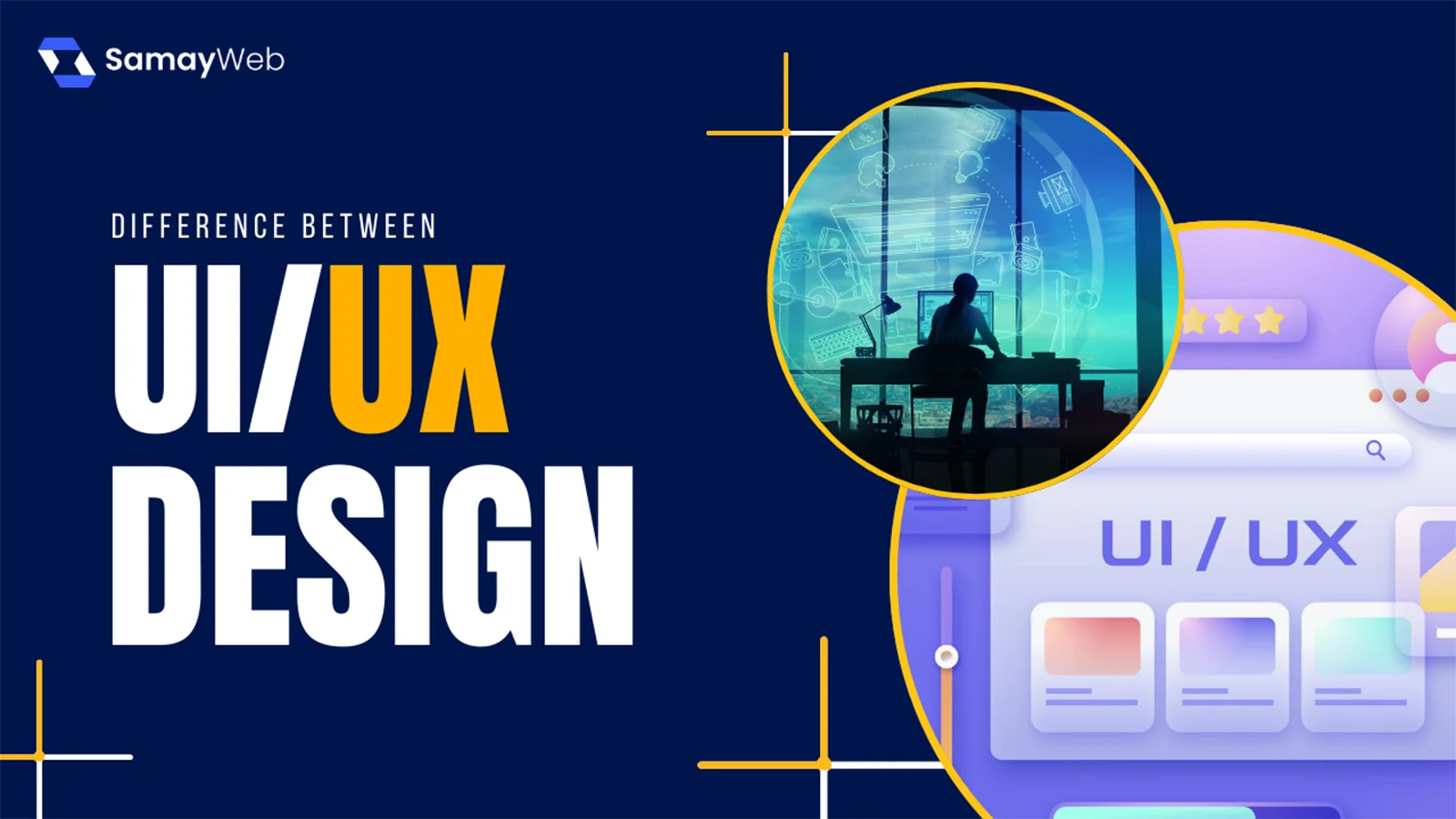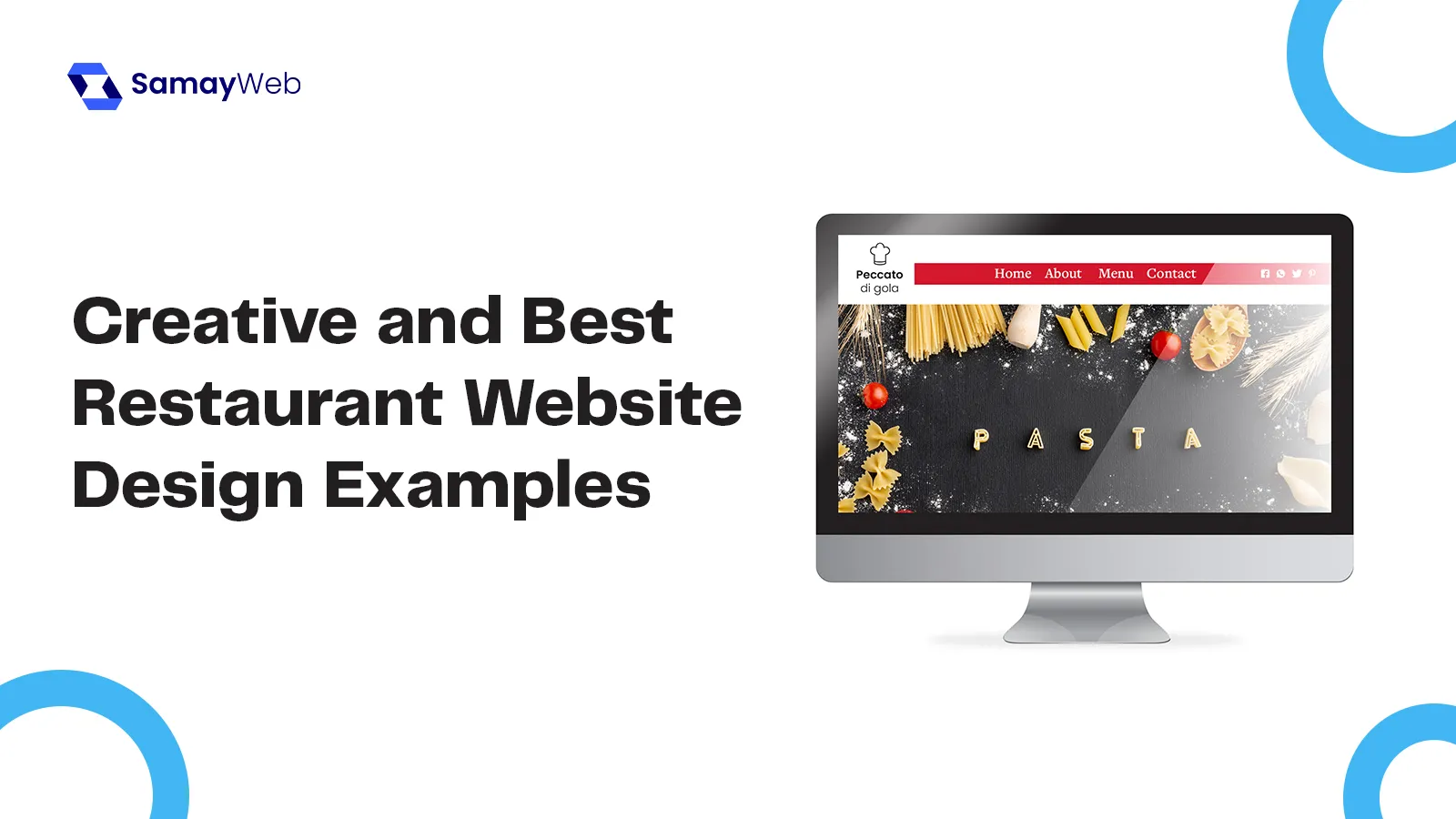What is UI design?
UI stands for User Interface design and is concerned with the visual depiction of a product through user-oriented functionalities. UI deals with the creation and arrangement of visually interactive components of a product, website, or mobile app. An aesthetic and user-friendly interface enhances interaction, engagement, response, conversion rates, etc.
The key components of UI design are colors, icons, menu bars, typography, images, navigation bars, and many more. The importance of a good User Interface design implies the optimization of product appearance and appeal to the customers.
What is UX design?
UX design or user experience, is a broader field that encompasses all UI features and is concerned with the depth of overall user experience. UX design focuses on product design with a user-centric approach, identifying customer demands and behaviors to deliver an engaging and seamless digital experience. UX designers create wireframes, prototypes, etc., by conducting thorough research to understand their target audience.
The advantages of UX design include enhanced user satisfaction, expectations, usability, accessibility, brand awareness, streamlined workflow, lower development costs and time, and many more.
The Importance of UI/UX Design in Business
User Experience
The contribution of UI and UX design to improve user experience and help customers accomplish their goals cannot be overstated. With UI and UX design, the page loading time can be minimized, and the product experience can be made easily accessible and visually appealing. This will further enhance engagement, customer loyalty, retention, etc.
SEO and Website Ranking
UI and UX strengthen SEO performance since both the design elements directly impact website rankings and organic traffic. UX signals assess the time users spend on a website, engagement patterns, bounce and conversion rates, etc. If users spend longer time on the website, then it indicates that they have a favorable experience, and they can relate to its content. This also increases organic traffic.
Mobile Responsiveness
In today’s digital world, users mostly engage with products through portable smart devices. This is why a good website should be designed with responsive UI/UX ensuring that it fits with multiple screen sizes.
Competitive Edge
Businesses with a superior UI/UX design can stay ahead of the curve by providing their customers with a convenient user interface and visually captivating products or pages. This can help with enhanced customer engagement and retention.
Brand Identity and Business Sucess
Digital products that offer a pleasant UI/UX design experience can increase conversion and retention rates while also upholding brand voice. A business that provides a seamless and favorable product experience will always persuade customers. This will make them loyal to the brand with which they will relate. This will help to drive growth and overall business success.
The exact difference between UX and UI?
User Interface |
User Experience |
|---|---|
It refers to the visual elements that allow users to interact with a product | It's about the feelings and emotions users experience when interacting with a product |
It focuses on the look and feel of a product typography, colors, images, and more |
It focuses on the overall user-friendliness of the user journey |
The goal is to make products more usable, aesthetically appealing, and optimized for different screen sizes |
The goal is to delight users with a product that is efficient and easy to use |
Tools to Improve Your UI/UX Design Skills
What makes a user keep coming back to your product? How do you design a product that looks great and feels just right? These questions are at the heart of user interface (UI) and user experience (UX)—where creativity meets empathy.
The best UX/UI tools offer a structured framework for organizing data, mapping the user journey, and bringing your design concepts to life. But remember, it’s not about having every platform in your tech stack—it’s about finding the ones which best serve your specific needs and complement your existing workflow.
Whether you’re building an intuitive website or working on a must-have invention, we’ve compiled a list of the best UI and UX tools, so you can transition your design process from ‘it works’ to ‘truly exceptional’. Here’s the tools we’ll be looking at:
Types of UX/UI design tools for your tech stack
UX/UI design is all about understanding the experience of your users and the make-up of your product. From wireframing initial concepts to prototyping interactive experiences, every step aims to create a design that resonates.
Whether you’re a seasoned designer or a beginner, here are the most common types of UI and UX design tools:
User testing tools
User testing tools are essentially the ‘try before you buy’ mindset applied to the design process. You can test your designs with real users, gain insights into their experiences, and fine-tune your product based on their feedback.
The best remote user research and usability testing tools, like Maze, provide features like task analysis, screen recording, A/B testing, surveys, and automated reports to guide your ideas into customer-centric products.
Wireframing tools
Wireframing tools help you create blueprints of your ideas, arrange content and functionality, and build the basic structure of your design before going into the details. These are low-fidelity, simplified frameworks of your design. Popular wireframing platforms like Balasmiq, Sketch, and UXPin let you sketch out your plans early on, so you can ensure your team and stakeholders are aligned on design objectives, and then conduct user research to test key functionality.
Visual design tools
Once wireframing and prototyping tools focused on structure and interaction, visual design tools focus on aesthetic elements—color selection, typography customization, image editing, and layout composition. These platforms often provide extensive libraries of pre-designed assets, templates, and style guides to streamline the design process and maintain consistency. It’s important to note that most prototyping tools also aid in visual designing.
Handoff tools
Handoff tools are the bridge between design and product development. They eliminate the need for tedious manual documentation and serve as a centralized hub for design handoff. Popular handoff software like Framer, InVision, and Marvel offer features like design asset extraction, style guide generation, code snippets, annotation, commenting systems, and version control—resulting in accurate and pixel-perfect implementations of the design every time.
The UX Design Process
The UX Design process can be divided into five stages EMPATHY, DEFINE, IDEATE, TEST, and PROTOTYPE. The stages often go on in the said order, also it is important to know that UX is an iterative process.
- Empathy: This way you put yourself in the user shoes by understanding how they feel and what brought about the emotion towards the product.
- Define: While in the stage of empathy we get a lot of feedback from our users, but not all problems can be solved at once with the same solution that is where “DEFINITION” comes into play in the UX design process whereby you have to filter the challenges by their level of importance, carry out research, observe and understand why these challenges are important.
- Ideate: This is the stage where by you have to start bringing up ideas that correlate to solving the defined problems based on the research done earlier. The concept here hinges on the generation of as many ideas as possible (even if they are completely wild) so that the designers can later sift through these and reduce them to the ideas that seem most promising.
- Protoytpe: The prototype process is used to understand and see how a product or application works, what it does and how a user should interact with it. They’re simulations of how a finished product will work. Sketches, wireframes and mockups serve other purposes in the design and prototyping process.
- Test: Like User Research, Testing is a fundamental part of the UX designer’s job and a core part of the overall UX design process. UX designers test because it allows them to improve upon the original product or site design and to see if the changes they made during the ‘design’ phase stand up to scrutiny.
I hope the brief explanations of the following UX design process gives you an head start on what the process is all about. Moving on let’s talk about the career opportunities of being a UX designer.
Conclusion
In an evolving digital ecosystem, the importance of UI and UX is equal to building a product that is viable for business. It is more than just the aesthetic aspect that attracts customers; it is also a benchmark for improving user experience and satisfaction to stand out in the competitive market.
Frequently Asked Questions
The benefits of using UX tools are?
Streamlined workflow from research and ideation to prototyping and testing Clear communication and collaboration among designers, stakeholders, and developers Visual consistency through customized design libraries, style guides, and components Smooth transition from design to development teams Easy adoption for different project sizes and complexities
Does UI/UX need coding?
No






